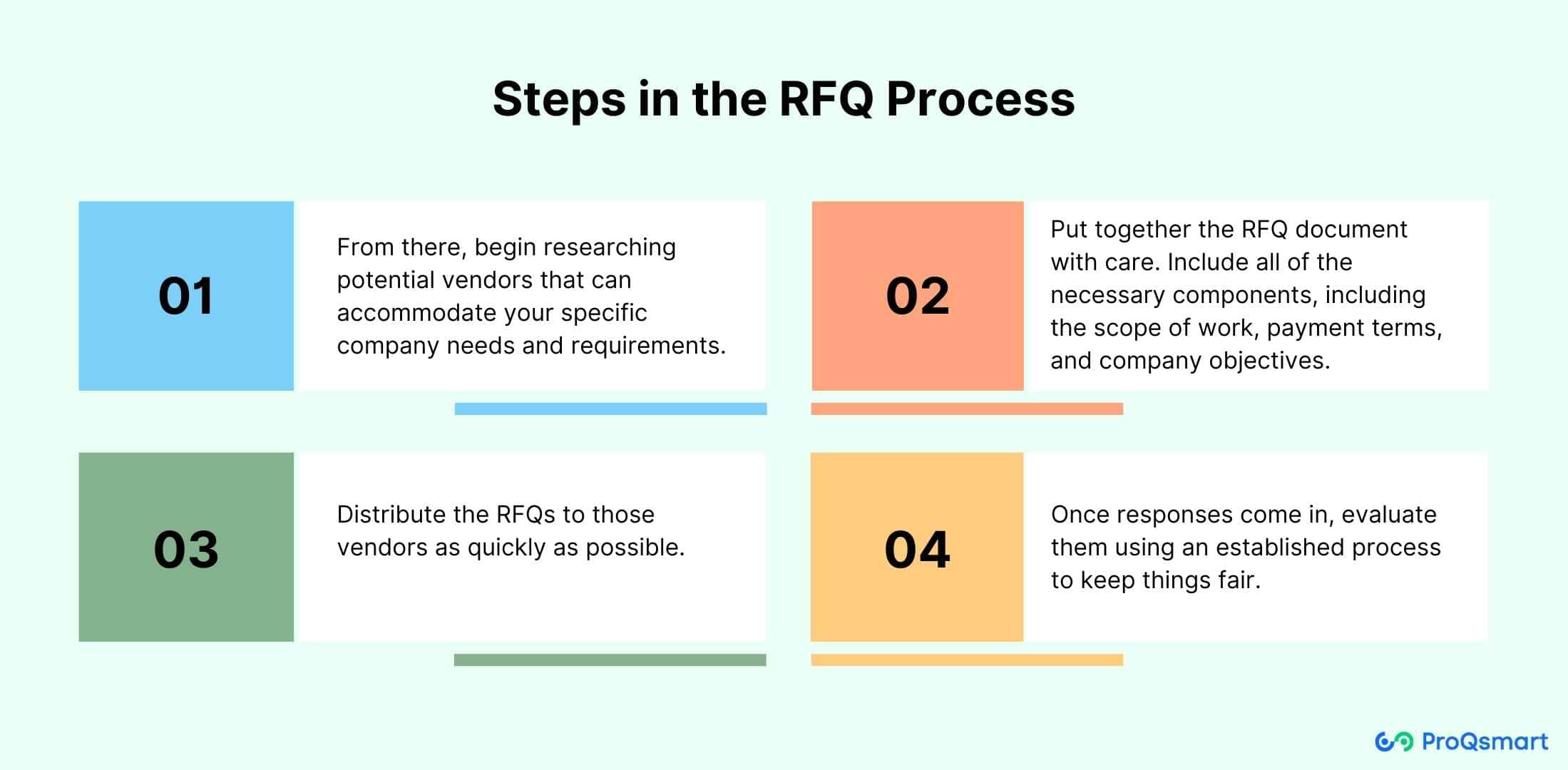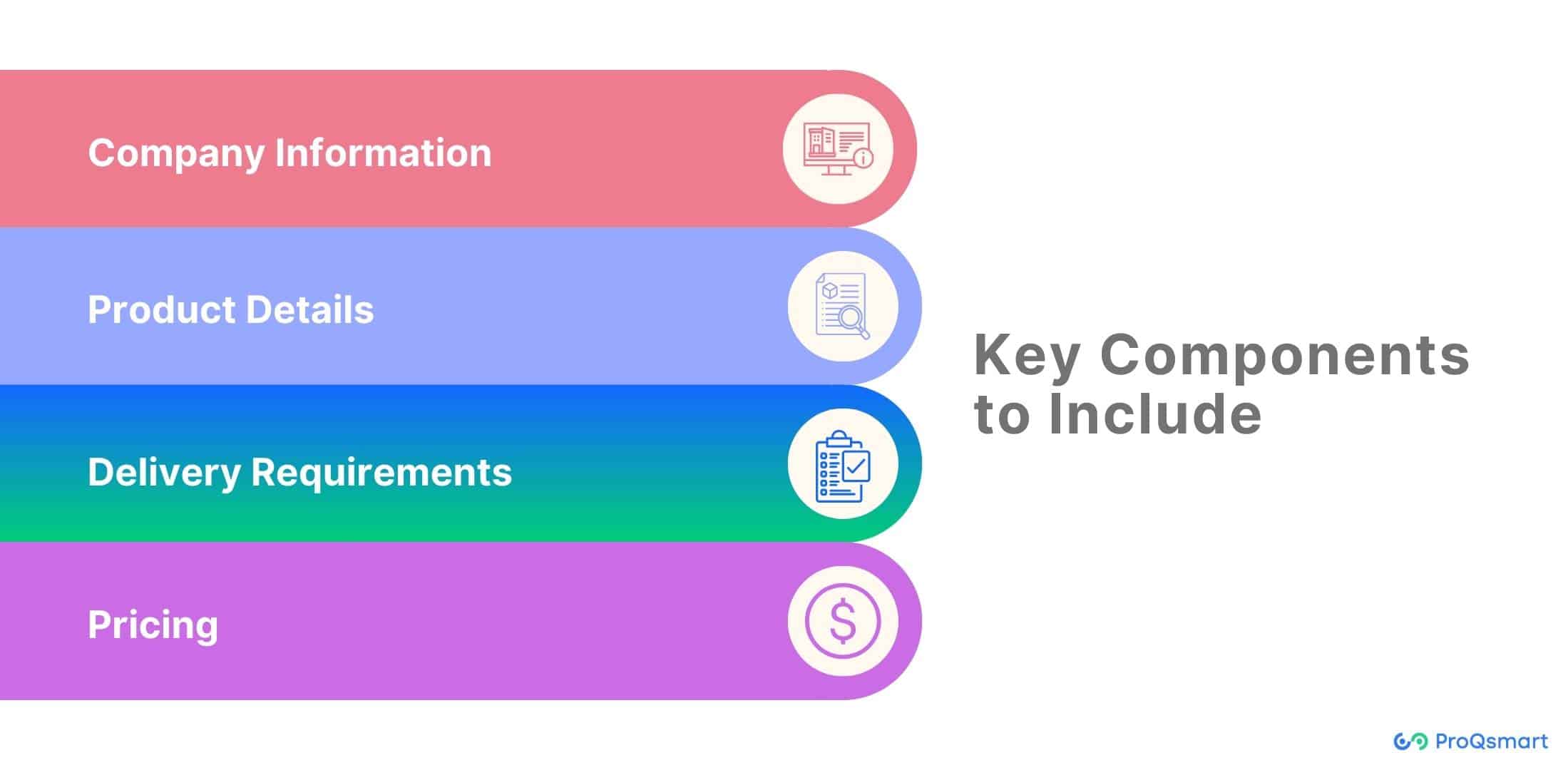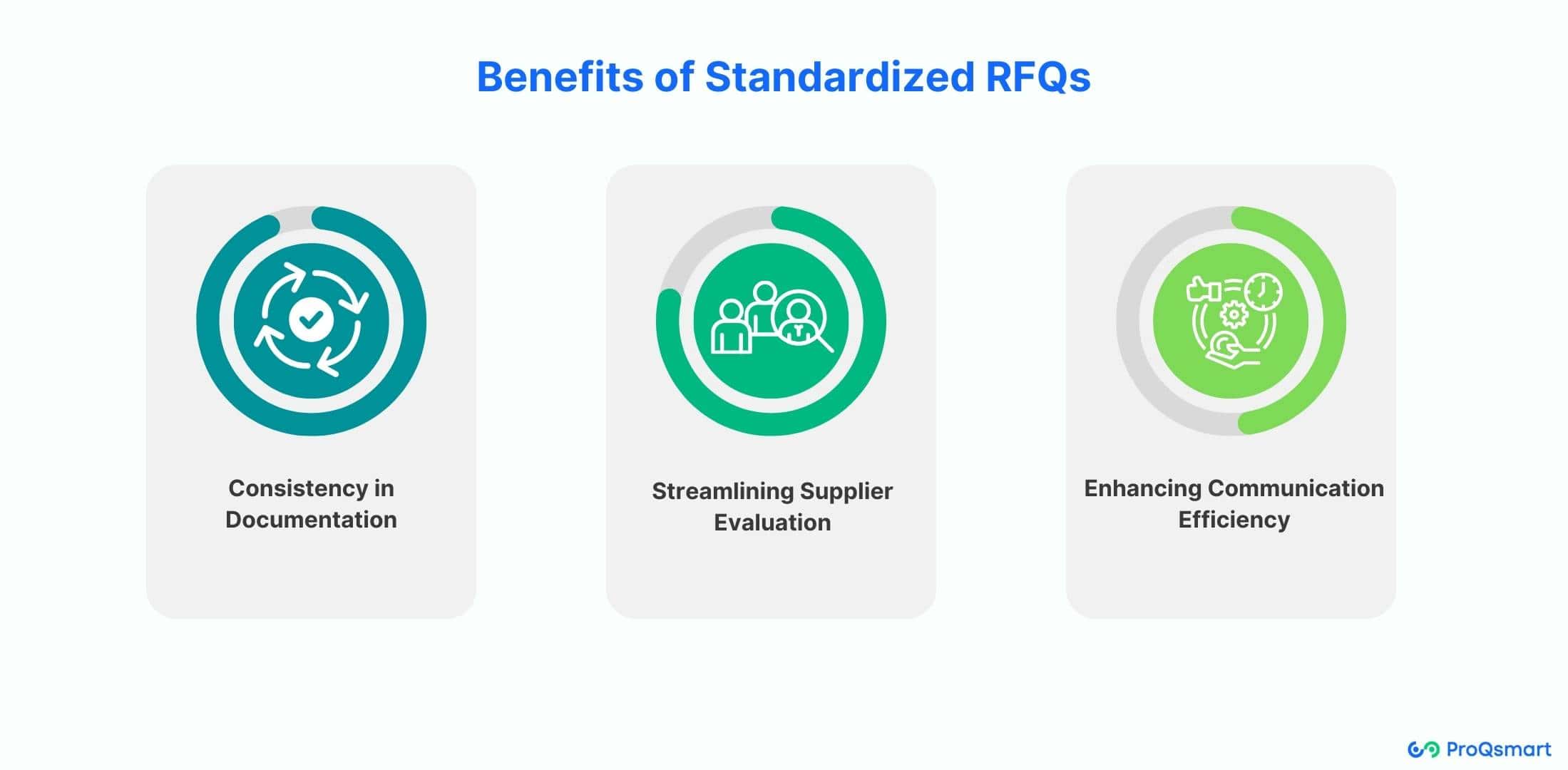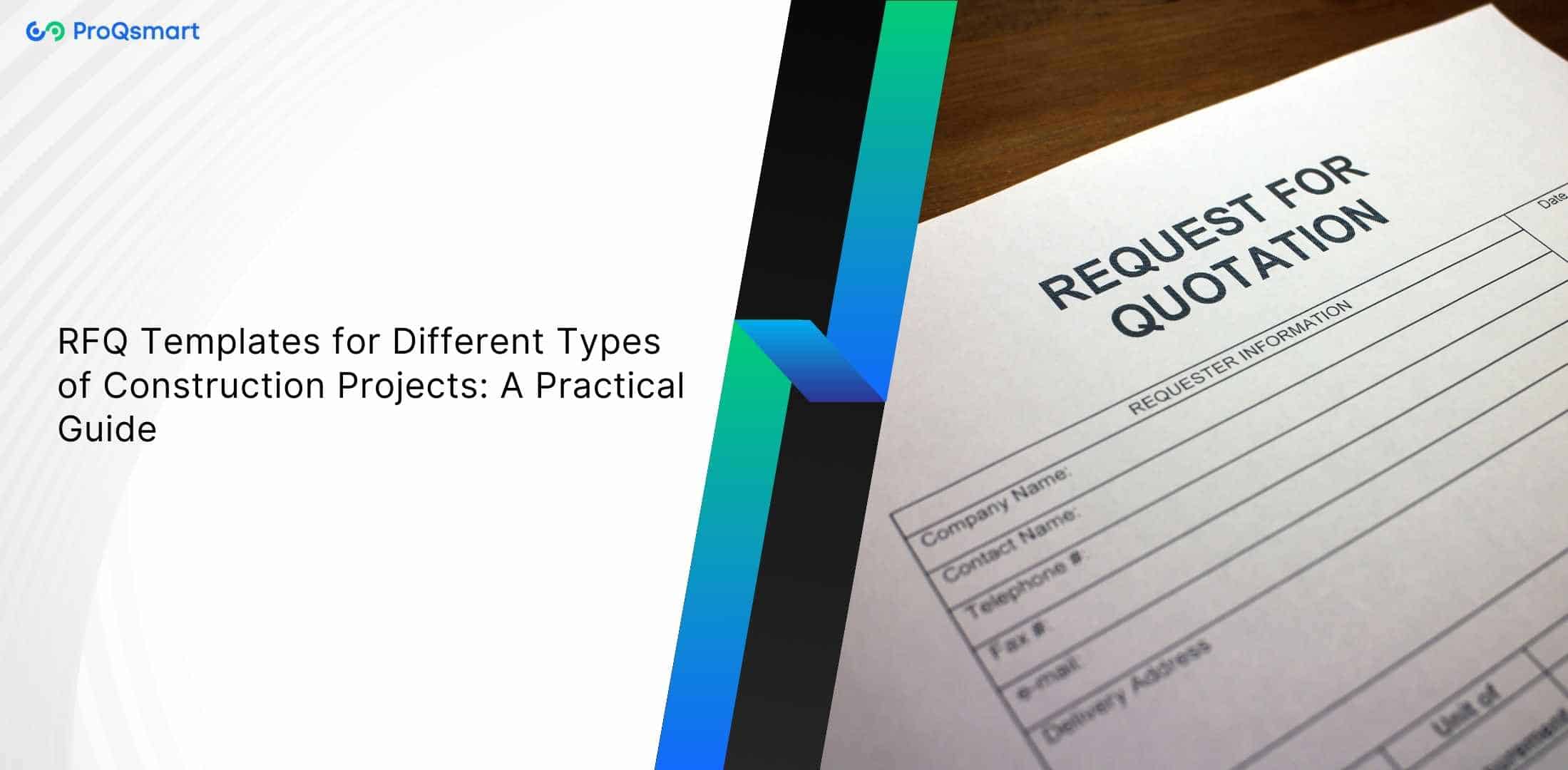Then dive into RFQ templates for construction projects. These templates aren’t mere forms — they’re conduits for clarity in procurement. They help define project scopes, timelines, and budgets, making them essential in the chaotic construction world.
Using a standardized RFQ template saves time and ensures the accuracy that’s important on every project, large or small. Imagine a process where everyone knows exactly what they need to do and when. That’s the strength of a well-formed RFQ template.
See how to select the one that’s best for you and customize it to your project needs. Watch other examples and learn how they break down complex processes. This guide enables you to take the lead in construction procurement with sound strategies and effective tools.
Make procurement simple and effective.
Key Takeaways
- An RFQ, or Request for Quotation, is a formal process to gather detailed pricing and cost information from suppliers. This enables them to make more intelligent decisions about specific products or services.
- The RFQ process involves several key steps. First, you define your requirements, then prepare and send out the RFQ documents. You get replies from suppliers and compare the quotes to select the best offer.
- Creating RFQ templates lets companies customize requests to individual project needs while establishing a clear, consistent format to ensure that all necessary information is gathered.
- Standardized RFQs really help make it easier for the person doing the procurement and actually reduce errors. They also make bids more comparable, which saves organizations time and resources.
- Construction RFQs show how to specify things in detail to suppliers. This method guarantees that suppliers submit competitive and accurate proposals.
- It’s important to know the difference between RFQs and RFPs. RFQs pertain exclusively to price and deliverables, while RFPs delve into overall project proposals and innovative solutions.
What is an RFQ?
Definition of RFQ

An RFQ, or “Request for Quote,” is a formal document. Use it when you know what you want to buy but need pricing information. You can think of it as a way to ask vendors, “How much will this run us?
An RFQ focuses on obtaining cost information for specific products or services. It’s a tool that’s commonly used in procurement in a lot of industries. When you send out an RFQ, include key details such as product specifications and desired quantities.
Be sure to include your projected delivery times. That way, suppliers have all the info they need to provide you with an accurate quote. Send an RFQ to suppliers you’re seriously considering. This specific inquiry isn’t a general shout for pricing; it asks about those you may actually work with.
Purpose of RFQ in Procurement
Why are RFQs such a big deal in procurement? They set budget expectations for businesses by providing a picture of what it’s going to cost. If you run a tech company and need to buy some new hardware, an RFQ can help.
It offers you the chance to find the lowest price by comparing different suppliers. This is important because, let’s be honest, who doesn’t want the best deal? An RFQ helps you do just that by sourcing competitive pricing.
Plus, RFQs streamline the whole procurement process. Rather than receiving quotes from vendors in a variety of formats, you standardize requests. This makes it easier to compare offers side by side. About 80% of companies use RFQs to compare costs. This demonstrates how critical they are to getting the most mileage out of a purchase.
Importance of RFQs in Construction
In the world of construction, RFQs are such a fundamental and crucial part of controlling the budget for a project. Construction projects can get pricey, fast. Having a detailed RFQ keeps those costs in check.
When you send an RFQ to contractors and suppliers, you’re inviting them to bid competitively. Not only does this help you get the best prices, but it also promotes transparency in procurement. If you are going to build a new office building, issue a bunch of RFQs.
They supply materials such as concrete or steel to your project. By comparing quotes, you ensure that you’re not overpaying and that the project stays within budget. RFQs create a level playing field for bidding.
This guarantees that the same criteria will apply to every vendor. When it comes to construction, RFQs are a must-have tool for effective budgeting and procurement.
RFQ Process Overview
Navigating the RFQ (Request for Quotation) process is like piecing together a puzzle—it requires careful planning, precise execution, and clear communication. The RFQ is your go-to method when you know what you want to buy and have a budget in mind, but need specific quotes from potential suppliers. By sending a request to these vendors, you’re asking them to provide proposals about their prices and terms.
It’s crucial to maintain fairness by ensuring all RFQs are uniform, asking each supplier the same questions.
Steps in the RFQ Process

- From there, begin researching potential vendors that can accommodate your specific company needs and requirements. It’s important to choose suppliers that meet your goals and have the ability to deliver. This step sets the stage for successful procurement outcomes. It narrows down who can actually meet your needs.
- Put together the RFQ document with care. Include all of the necessary components, including the scope of work, payment terms, and company objectives. Clarity is paramount here; any vague answer may lead to misunderstandings or incorrect quotes. Using procurement software can streamline this process, making it easier to manage and reducing the chance of mistakes.
- Distribute the RFQs to those vendors as quickly as possible. Consider online submissions for sending these requests; it has a greater reach, and tracking submissions is easier. It’s advisable to monitor who replied and when so that you can have a well-structured review later.
- Once responses come in, evaluate them using an established process to keep things fair. Typically, price weighs heavy—80% of the decision—while quality and delivery time add up to 20%. Adhere to your timelines and submission deadlines to keep momentum and fairness intact for everyone involved.
Preparing the RFQ Document
Creating the RFQ document is more than just detailing what you want. You really need to remove any room for doubt. Begin with the basics—set out your company’s goals, the work they are expected to carry out, and the timeline they need to adhere to.
Payment terms and conditions are important as well. Well-prepared documentation ensures that all potential vendors have the same information and the process is fair. Lean on procurement software if you can—it makes this simpler and keeps everything in one place.
Sending Out RFQs
Turning your RFQs into potential vendors is a good move. You want to get to them quickly and efficiently; online is where it’s at. They not only help you reach more people, but they also make it easier to manage and track your responses.
Whatever you do, give vendors plenty of time to get back to you. This honors their time and gives you more complete quotes. After all, being organized and keeping track of submissions will serve you well during the evaluation stage.
Customizing RFQ Templates
Let’s discuss why it’s essential to customize RFQ (Request for Quotation) templates. Every project is going to have its idiosyncrasies and requirements. That’s where a good RFQ template comes in handy. You tailor these templates to fit specific project requirements, so you’re not just going through the motions. You’re ensuring that everything fits together.
Customizing adds meaningful details to your project, such as special instructions for vendors or payment terms. Sending out a perfectly tailored RFQ for each project elevates your proposal creation process and simplifies your business communication. A streamlined RFQ template will make your life much easier and more efficient.
Using a customized template saves time and promotes consistency in your workflows. Have you ever considered repurposing feedback from previous RFQs? It’s a game changer. As you incorporate lessons learned, you sharpen your processes and avoid repeating past mistakes.
For instance, if a vendor faced issues due to unclear directions, ensure your templates address that problem. You can even add a Q&A period in the RFQ process to nip misunderstandings in the bud and foster better communication with prospective suppliers.
Selecting the Right Template
When choosing an RFQ that works for you, get smart. Here’s a quick checklist:
- Is it a small or large-scale project?
- Complexity: How many moving parts are there?
- Vendor Requirements: Do they need specific qualifications or certifications?
It’s important to choose the correct template, just like it’s important to pick the right tool for the job. It should complement your project objectives and the objectives of stakeholders. Don’t just jump in — look at several templates and see which one works best for you.
This thoughtful selection process can mean the difference between a smooth procurement experience and one that’s full of hiccups.
Adapting Templates for Projects
Once you have your template, modify it to work for your project. It’s kind of like custom making a suit—you want it to fit the unique specifications of your project. In industries like construction, where the details matter a lot, including specifications and project milestones is key.
Closely work with project managers to capture all necessary information. Remember, clearly and concisely provided info is essential, including the RFQ number, milestones, and required legal proposals. This way, nothing gets left out and the template is truly useful.
Key Components to Include

What you should ensure you include in your RFQ template. Here’s a handy list:
- Company Information: Who’s sending this RFQ?
- Product Details: What exactly do you need?
- Delivery Requirements: When and where should it be delivered?
- Pricing: What’s the budget or expected cost?
Add succinct submission requirements and deadlines, and define evaluation criteria to help in the vendor selection process. This helps vendors know exactly what’s expected and helps you compare responses more effectively.
When you customize RFQ templates, you do more than just collect quotes. You have a great opportunity to show potential clients exactly what you do.
Benefits of Standardized RFQs

Standardized RFQs are like a reliable guidebook for procurement teams, making sure that every quote request sings the same song. They bring consistency to your procurement documents, so that instead of chaos, things run like a well-oiled machine. When you use standard templates, it’s like having a building plan that diminishes mistakes and omissions.
Ever tried piecing together a puzzle without all the pieces? That’s what it’s like without standardized RFQs. When you put everything neatly in its place, you don’t miss the important stuff. This keeps your plans steady and rolling along.
Consistency in Documentation
Uniformity is a big deal in RFQ documentation. Let’s say you have a stack of documents, but each speaks a different language. A standardized RFQ brings it all into harmony, creating clarity and making it easy to compare vendor responses.
It’s more like a universal translator that makes sure everyone is reading the same form. Having a standard format means future RFQs are good to go with the least amount of fuss. Tweak what you need, and you’re off to the races.
This not only saves you time but also ensures you aren’t reinventing the wheel every time.
Streamlining Supplier Evaluation
When it comes to evaluating suppliers, standardized RFQs are a game changer in consturction. They make the evaluation process simple for procurement teams. Clear criteria for assessing bids save you from sifting through a mountain of papers.
Instead, you can instantly track down the golden ticket. It’s all out there, but you can more easily connect with the right supplier. This uniform approach accelerates vendor evaluation, allowing you to spend more time on what you care about.
With 80% of businesses reporting improved procurement efficiency, it’s clear that standardization isn’t just a nice-to-have—it’s an absolute requirement.
Enhancing Communication Efficiency
A standardized RFQ is more like a clear conversation between buyers and suppliers in construction. It spells everything out so the chances of crossed wires and misunderstandings are diminished. When everyone knows what’s expected, it smooths the path for better relationships with vendors.
Clear RFQs mean suppliers aren’t left guessing, which builds trust and can lead to better deals. This reduces overpricing. Suppliers understand they’re not the only game in town, so they are motivated to put their best prices forward.
This type of transparency can enhance the outcome of vendor selection, keeping both parties satisfied and the business flowing.
Examples of Construction RFQs
Constructing a request for quotation (RFQ), known as a request for quote, varies depending on the type of build. Here’s a quick list of RFQ types you might come across:
- Residential RFQs: Tailored for homes and apartments.
- Commercial RFQs: Used for offices, malls, and other business properties.
- Infrastructure RFQs: Essential for projects like roads, bridges, and public utilities.
Each type has its own needs and considerations. Make sure your RFQ is in perfect tune with your construction project context. That way, you’ll get the best, most appropriate responses from vendors.
Residential Project RFQ Examples
For residential projects, consider effective RFQ strategies that target single-family residences or apartment buildings. These RFQs should encompass elements such as design specifications, material quality, and timelines to ensure a streamlined RFQ process.
When constructing a new apartment building, specify how many units you want and select the types of flooring materials, while also setting the expected energy efficiency standards to meet sourcing requirements.
Attracting the right vendors is one of the significant challenges of residential RFQs. You need to ensure that they’ll deliver quality work on time and within budget. To combat these challenges, establish reasonable expectations and utilize a construction RFQ template.
You may also want to include a clause for GMP contracts and select the contractor based on SOQ to facilitate the procurement team’s decision-making process.
Commercial Project RFQ Examples
For commercial projects, RFQs become a bit more specific. Think big office buildings or shopping centers. An RFQ here should come with ample specifications and compliance standards.
For example, these might include the requirement for certain fire safety features or energy efficiency goals. For larger budgets and complex scopes in construction, RFQ planning is key.
The role of the RFQ in construction is important, as it helps keep the project on track financially and logistically. Use one centralized RFX management system to make selecting your vendors easy.
Stick to no more than eight vendors, or you’ll start feeling overwhelmed by too many choices.
Infrastructure Project RFQ Examples
Cost estimation is another biggie in the construction bidding process. Lay out how you’re expecting contractors to estimate costs in their co
Infrastructure projects come with their own set of challenges, and RFQs have to cover everything from regulatory to safety considerations. For example, imagine an RFQ to build a new bridge.
Such an RFQ would require detailed documentation in construction, which may include environmental impact assessments and safety protocols to comply with public sector requirements. Public projects often have strict regulations, and documentation is everything.
In these instances, the winning bidder is typically the lowest price. This result balances being competitive with the public nature of project bidding while still attaining all of the requirements. Promote openness regarding their pricing policies to ensure these estimates align with the project scope, avoiding surprises down the road.
Analyzing and Selecting Suppliers
In today’s fast-changing world of procurement, sifting through supplier responses to an RFQ is like putting together a puzzle. You have to follow some critical steps to make sense of it all. First, you need a solid evaluation framework.
Take this as your field manual. It gets that you’re considering the overall value the supplier represents, rather than being focused on the lowest price. This framework should be obvious, leaving no stone unturned from pricing to capabilities to delivery timelines to past performance.
Evaluating Supplier Responses
When you get into supplier answers, you are looking for more than numbers. Here’s where a bullet list comes in handy:
- Pricing: Look for the breakdown, including any volume discounts.
- Can they deliver what you need, when you need it?
- Are they realistic and do they fit in your schedules?
- Have they done good work for similar projects previously?
Evaluating these against benchmarks you’ve set earlier helps you see who’s really meeting your needs. Don’t do it alone. Rally your crew, because two heads are always better than one.
When everyone pools their expertise, your chances of discovering the ideal supplier improve. This collaborative approach will make sure that all of your criteria are met.
Defining the Supplier List
As you create a supplier list, it’s not about creating a long list but a smart one. Try to stick to no more than eight vendors to keep it manageable. This list should be fluid; you’re constantly measuring their performance so it stays fresh and strong.
Remember the power of diversity. Incorporate a variety of suppliers to promote competition and innovation, leading to greater options and solutions.
Finalizing Supplier Selection
You’ve weighed the responses. What’s next? You narrow down your options with a bit of work. Communicate with the buyers you selected and the ones you didn’t.
It’s about keeping relationships and maybe laying the groundwork for something in the future. Then, get into contract negotiations. Here, you lock in favorable terms. That ensures we both understand each other and sets clear expectations on both sides.
During this whole process, just keep in mind preparation will be your best friend. The time spent now saves you headaches later.
Leveraging tools such as LevaData’s RFQ solution can simplify this, providing accountability and a high ROI. Eighty percent of procurement teams now utilize digital tools. The beauty of a centralized RFX management system is you can operate quicker and more effectively.
Differences Between RFQ and RFP
Purpose and Usage Comparison
Understanding the difference between RFQs and RFPs can significantly enhance your procurement process. By mastering these concepts, you will become a more effective buyer. Each serves unique purposes, varying in complexity and the specific pricing information they require, ultimately impacting your project’s success.
Feature | RFQ | RFP |
Purpose | Price-focused, straightforward buys | Detailed proposals for complex solutions |
Complexity | Low, with clear specs | High, requiring creative solutions |
Required Info | Simple, quantitative data | Comprehensive, qualitative responses |
RFQs and RFPs serve different roles. When you simply need to procure something basic, such as office supplies or simple equipment, you use an RFQ. It’s just about landing the best price on what you want.
When the going gets tough, you need an RFP. For instance, you’d use one to hire a team to design a new IT system. You’re not just looking for a price tag but also the best way to solve a problem.
When you know which to pick, you can make smarter choices. They ensure you get precisely what you need without wasting time or resources.
Information Required in Each
For RFQs, you usually need:
- Exact product specifications
- Quantity needed
- Delivery timelines
- Price comparisons
For RFPs, you might need:
- Detailed project requirements
- Proposed solutions or methodologies
- Experience and qualifications of the vendor
- Cost estimates and timelines
RFQs are relatively simple, and they’re more numbers-driven and detail-oriented. RFPs require a lot more info. They’re about understanding the big picture and making sure the vendor can meet all your needs.
Get the info right; your project stays on track, and you avoid surprises.
When to Use RFQ vs RFP
Here’s how to know when to go with an RFQ or an RFP. Use an RFQ if your project is simple and you know exactly what you need. Think routine purchases where price is the only issue that matters.
If your project is larger and needs creative solutions, start a marketing campaign. If that’s the case, an RFP is the way to go. It’s really important to be careful about what your project requires.
This is a huge make or break choice for how smoothly everything goes.
Final Remarks
RFQs may appear to be nothing more than a series of letters, but they pack some serious power in the business world. Why? They allow you to score the best deals, source the best suppliers, and stay clear and tidy. You’re smart enough to know how to write an RFQ in construction and what makes one tick. You can see the advantages and how they compare with RFPs. It’s about making educated decisions and getting a good value.
Ready to dive into the RFQ process yourself? To elevate your RFQ management and streamline your procurement processes, consider using ProQsmart. With its advanced features designed specifically for efficient RFQ handling, ProQsmart can help you achieve optimal results in your sourcing efforts.


